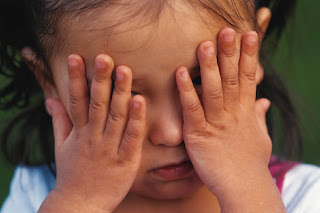
How many times can one person read the same storybook without going crazy? If you’re under age 5, the sky’s the limit. Or so it seems to weary parents who can be overheard at bedtime pleading with their children, “You want Goodnight Moon AGAIN? But that’s 14 nights in a row!” And then there are the occasions when sleepy parents make sly attempts to shorten the bedtime story just a little but are caught up short when a plaintive voice protests “No Mama! Where comb ‘n brush!?” What’s a parent to do?
The answer is simple. Grin and bear it. Why? Because although reading the same story over and over again may seem to be an imaginative form of parent abuse, your child’s motivation is really a positive one. In asking for the same book again, your child is really eagerly awaiting another lesson in memory development. Children between one and four years are programmed to work hard at practicing remembering things, whether it’s the plot of a certain book or video or the order of events when they take a bath or get dressed in the morning. By reading the same story more than once, you’re providing more chances for them to learn the “script.” They love the challenge and then the pleasure of being able to predict what’s going to happen on the next page. And as the sleepy parent reading “Goodnight Moon” learned, pretty soon your child will be able to fill in the blanks as well as, if not better than, you can!
So, yes, it’s important to read the same books over and over. Doing so is actually another easy way to support your child’s intellectual development.
Happy Signing (and don’t forget to follow us on Facebook)!
Linda
Linda Acredolo, Ph.D.
Co-Founder, the Baby Signs® Program
and
Professor Emeritus, UC Davis



